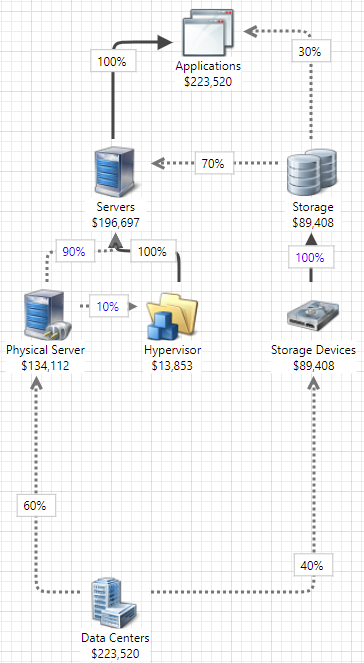
Challenges are designed to help sharpen your TBM and Apptio skills. See title for rating: [+] Easy [++] Moderate [+++] Challenging
The third question is here! You can start playing now and get your first piece of the pie, or if you passed either the first or second questions, you can earn another. 30pts and a TBM Pursuit piece for anyone with the correct answer.
Question closes Jun 29.

Here's what @Chris Davidson has for you this time....

Assume I have all the data I could possibly want describing my:
1. Data Centers
2. Mainframes
3. Network Devices
4. Physical Servers
5. Hypervisors (a subset of Physical Servers which host and monitor Virtual Servers)
6. Virtual Servers (often combined with non-hypervisor physical servers to form a comprehensive Servers list)
7. Storage Devices (actual hardware characteristics and identifiers)
8. Storage logical volumes (each consisting of one or more storage device)
9. Applications
Each item in bold above corresponds to one object in my Data Center Cost Model, in which I'm trying to determine the best way to allocate my known data center cost (known per data center, and which sums to $223,520 this month) up to my list of applications, along the way burdening any other applicable object(s).
I'm using ATUM V2.1, so my data center costs are:
Enterprise Data Center: Purpose-built data center facilities that house and protect critical IT equipment including the space, power, environment controls, racks, cabling and "smart hand" support.
Other Facilities: Computer rooms and MDF/IDF/telco closets that house IT equipment in corporate headquarters, call centers or other general purpose office buildings.
My model intentionally only includes data center costs mentioned above.
It does not for instance include server hardware depreciation or software licensing costs.
Study the nine diagrams below.
OPTION 1

OPTION 2

OPTION 3

OPTION 4

OPTION 5

OPTION 6

OPTION 7

OPTION 8

OPTION 9

Assuming all of my allocations use the best available strategies (in other words, the allocation strategies themselves are irrelevant for this challenge), and assuming all cost amounts and percentages shown above are correct...
Which cost model option is best?